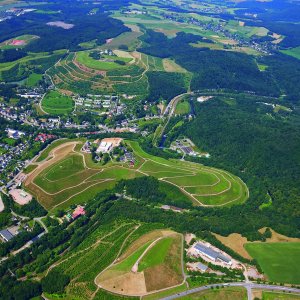Brief Description
The extraction of uranium in the former GDR resulted in large quantities of residues, which were deposited in the form of waste rock piles near the extraction site. Most of these tailings have been covered with a mineral cover as part of remediation activities that have already been completed. Ageing processes in the mineral cover, e.g. due to climatic conditions, burrowing activity and root penetration, lead to cracks and displacements in the cover layer and can thus contribute to the release of radon. In the vicinity of residential buildings, increased radon concentrations in the ambient air can lead to exceeding reference values according to the Radiation Protection Act. As a result of numerous modelling exercises, consultations with the specialist departments concerned and optimisation approaches, two preferred variants were worked out: the installation of an asphalt sealing layer or a plastic sealing membrane with various sub-variants.
Long-term stability of remediated uranium mining waste rock dumps |
Publications
In German:
- Al-Akel, I. S., Kunze, C., Müller, I. M., & Schneider, P. (2022). Langzeitstabilität sanierter Uranbergbauhalden. Final Report
Project Title
Long-term stability of remediated uranium mining waste rock dumps
(Langzeitstabilität sanierter Halden aus dem Uranbergbau)
Duration
01.09.2019 - 30.09.2022
Funding
Saxon State Office for Environment, Agriculture and Geology (Landesamt für Landwirtschaft, Umwelt und Geologie Sachsen)
Project Partners
- Leipzig University of Applied Sciences (HTWK), Germany
- DBI-EWI GmbH Freiberg, Germany
- IAF Radioökologie GmbH Radeberg, Germany


